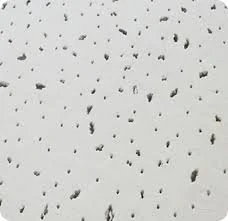- Afrikaans
- Albanian
- Amharic
- Arabic
- Armenian
- Azerbaijani
- Basque
- Belarusian
- Bengali
- Bosnian
- Bulgarian
- Catalan
- Cebuano
- Corsican
- Croatian
- Czech
- Danish
- Dutch
- English
- Esperanto
- Estonian
- French
- German
- Greek
- Hindi
- Indonesian
- irish
- Italian
- Japanese
- Korean
- Lao
- Malay
- Myanmar
- Norwegian
- Norwegian
- Polish
- Portuguese
- Romanian
- Russian
- Serbian
- Spanish
- Swedish
- Thai
- Turkish
- Ukrainian
- Uzbek
- Vietnamese
nov. . 14, 2024 21:56 Back to list
mineral wool board r value
Understanding Mineral Wool Board and Its R-Value
When it comes to insulation materials, mineral wool board, also known as rock wool or stone wool, stands out as a highly effective option for enhancing energy efficiency in buildings. One of the most critical properties of any insulation material is its R-value, which measures its thermal resistance. The higher the R-value, the better the material is at insulating and resisting heat transfer. Let’s delve deeper into the attributes of mineral wool board and its significance in achieving optimal thermal performance.
What is Mineral Wool Board?
Mineral wool board is created from natural or recycled materials, mainly basalt rock, and can also incorporate other industrial by-products. These materials are melted at high temperatures and then spun into fibers. The resulting thermal insulation material is not only lightweight but also possesses excellent acoustic properties. This makes mineral wool board an increasingly popular choice for a wide range of applications, including residential, commercial, and industrial buildings.
R-Value of Mineral Wool Board
The R-value of mineral wool board generally ranges from R-3.0 to R-4.5 per inch of thickness, depending on its density and manufacturing process. This means that mineral wool insulation effectively impedes heat flow, providing a comfortable indoor environment regardless of outdoor conditions. For instance, when used in walls, roofs, or ceilings, mineral wool can significantly reduce heating and cooling costs, contributing to a more sustainable living space.
Advantages of Mineral Wool Board
1. Energy Efficiency The insulation provided by mineral wool board translates directly into energy savings. Homes or buildings with superior insulation require less energy for heating or cooling, which is beneficial not only for reducing utility bills but also for minimizing environmental impact.
2. Fire Resistance One of the standout features of mineral wool is its fire resistance. It can withstand high temperatures without losing structural integrity, making it a safer choice for insulation in various building applications.
mineral wool board r value

3. Soundproofing In addition to thermal insulation, mineral wool board is adept at soundproofing due to its dense composition. This makes it ideal for use in noisy environments or in spaces where sound attenuation is desirable, such as recording studios or residential buildings located near busy streets.
4. Moisture Management Mineral wool board is hydrophobic, meaning it repels water rather than absorbing it. This characteristic helps prevent mold growth and contributes to healthier indoor air quality.
5. Sustainability Many manufacturers produce mineral wool using recycled materials, contributing to the sustainability of the building industry. Additionally, mineral wool is recyclable at the end of its life cycle, enabling a circular economy approach.
Best Practices for Installation
To maximize the R-value and performance of mineral wool board insulation, installation is key. Here are some best practices
- Proper Fit Ensure that the boards are cut to fit snugly between studs or joists. Gaps can significantly reduce the effective R-value and allow for air leakage. - Vapor Barriers Depending on the climate, consider using vapor barriers to control moisture movement within walls and ceilings. This can prevent condensation and protect the structure from potential damage.
- Follow Manufacturer Guidelines Always adhere to the installation instructions provided by the manufacturer to achieve the best results.
Conclusion
In conclusion, mineral wool board presents a robust solution for insulation, offering an impressive R-value along with numerous benefits such as fire resistance, soundproofing, and moisture management. As energy efficiency becomes increasingly important in building design and renovation, mineral wool board stands as a practical choice for those looking to improve their space’s thermal performance while adhering to sustainable practices. Whether you’re upgrading a home or constructing a new building, considering mineral wool board insulation can lead to significant long-term savings and comfort.
-
Transform Interiors with PVC Gypsum Ceiling: A Stylish, Durable, and Moisture-Resistant SolutionNewsMay.19,2025
-
The Smart Interior Upgrade: Discover the Durability and Versatility of Gypsum Ceiling Access Panel SolutionsNewsMay.19,2025
-
The Smart Choice for Interior Design: Discover the Value of PVC Gypsum Ceiling SolutionsNewsMay.19,2025
-
Mineral Fiber Ceiling Tiles: The Smart Blend of Performance and AestheticsNewsMay.19,2025
-
Mineral Fiber Ceiling Tiles: The Superior Choice Over Gypsum for Sound and Fire SafetyNewsMay.19,2025
-
Mineral Fiber Ceiling Tiles: Eco-Friendly Strength and Style for Every CeilingNewsMay.19,2025







